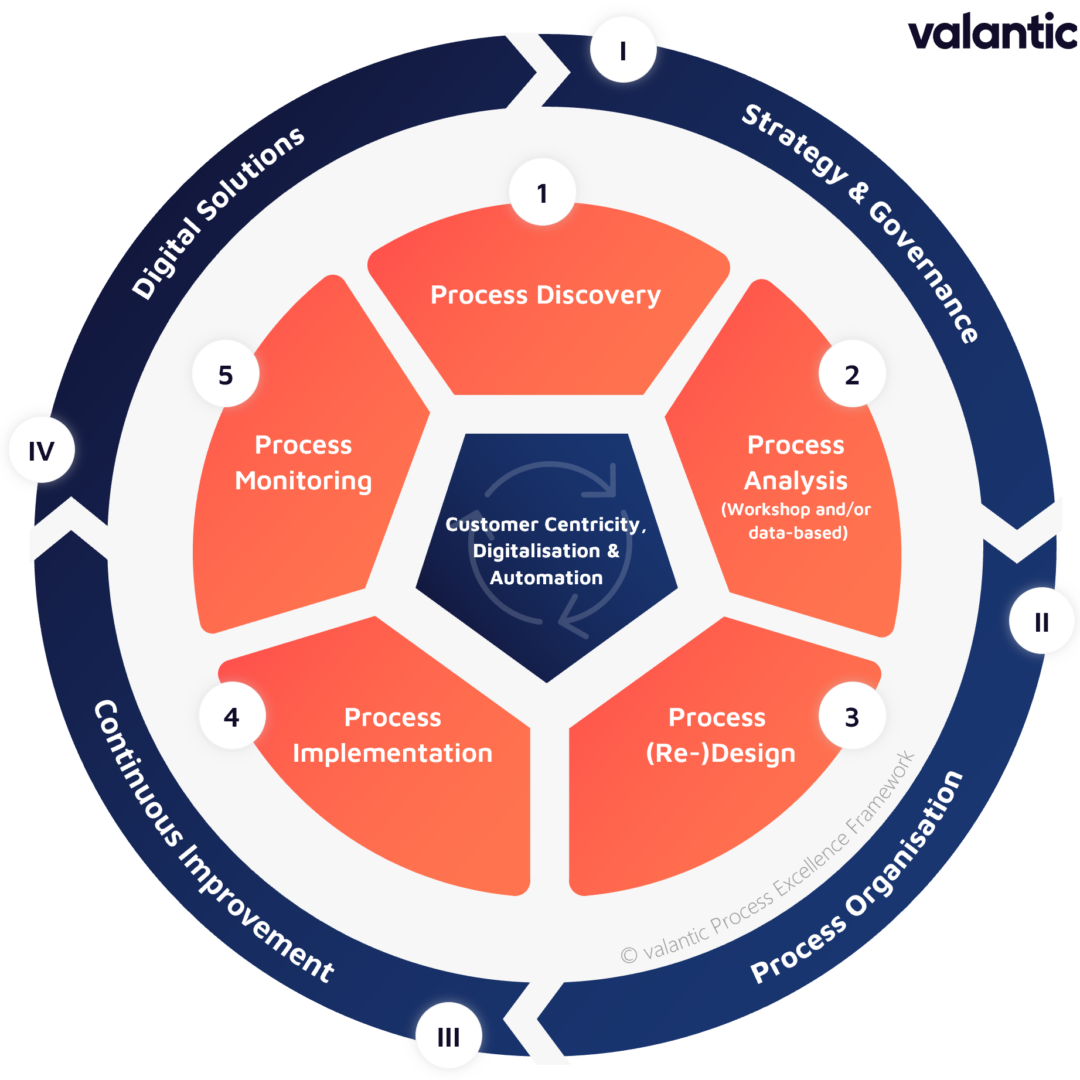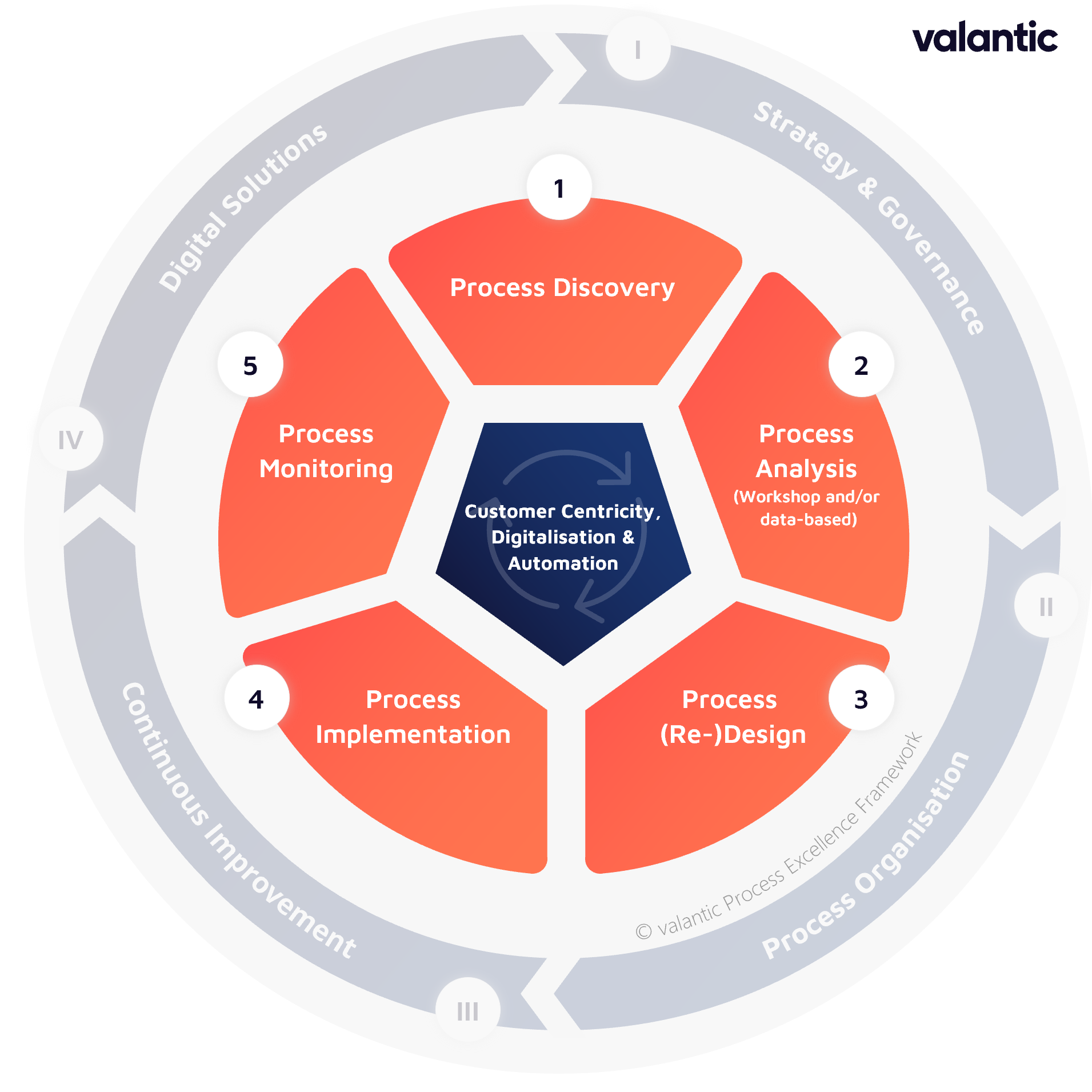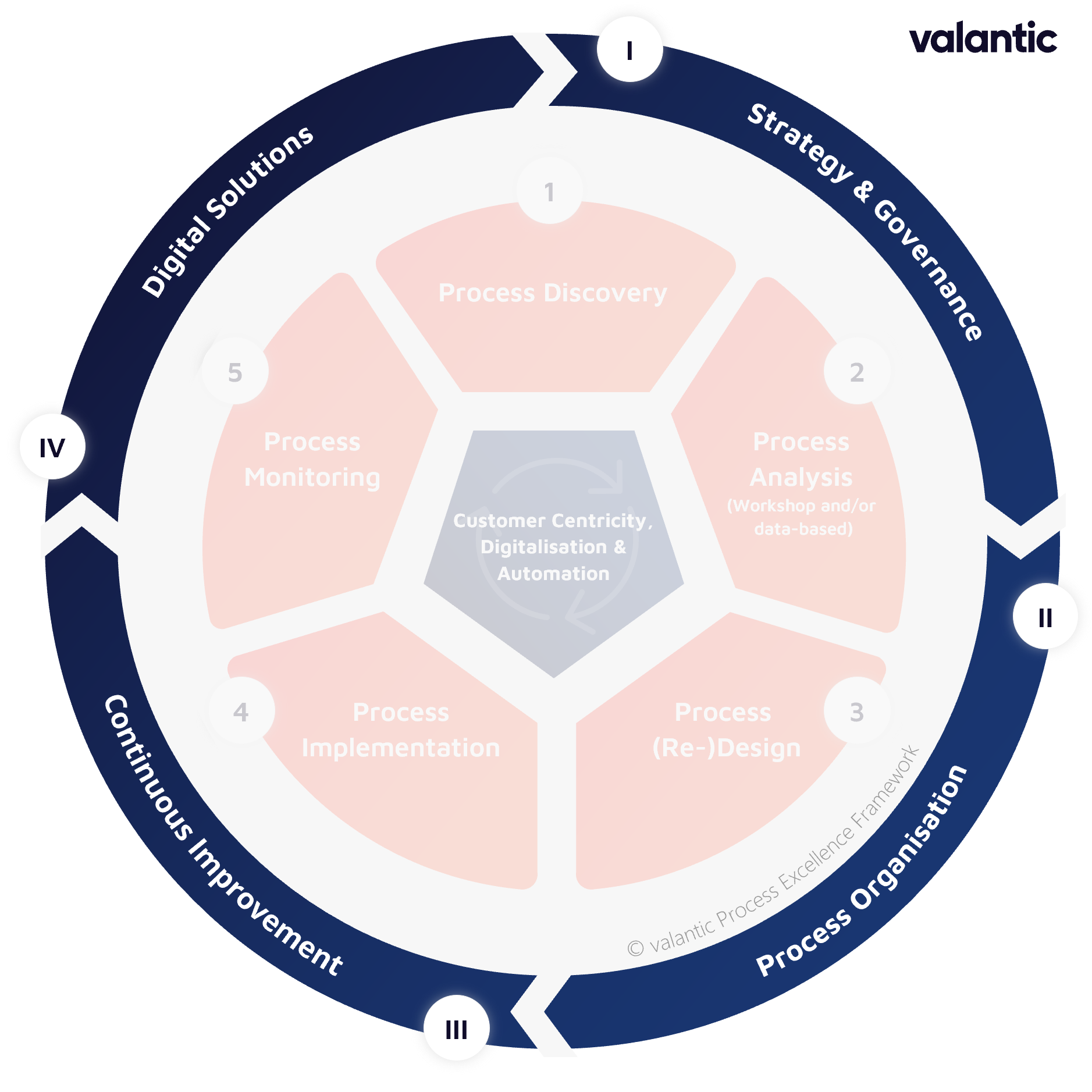During process implementation, the developed target processes are put into practice. This step is crucial to ensure that the process improvements actually lead to the desired results. Implementation includes introducing new workflows, training employees, adapting systems and tools, and monitoring and continuously optimizing processes.
In addition to the BPM tools mentioned above, process implementation can and should be supported with various tools, including project management tools (Jira, Asana, etc.), e-learning platforms, communication platforms (Teams, Slack, Confluence, intranet portals, etc.) and feedback tools.
In the process implementation phase, organizational changes are implemented that are often associated with fears, concerns and resistance. It is therefore crucial that a change management concept tailored to the needs of the organization begins to take effect in this phase at the latest, which includes appropriate training, education and communication measures.








